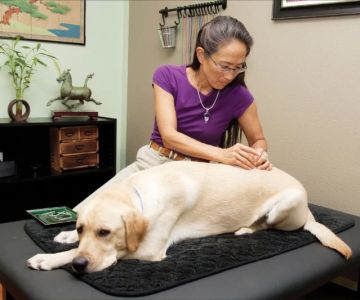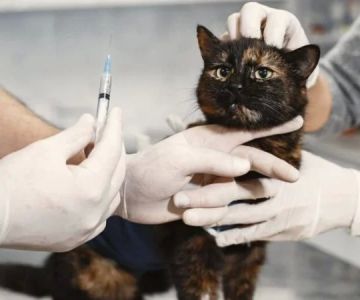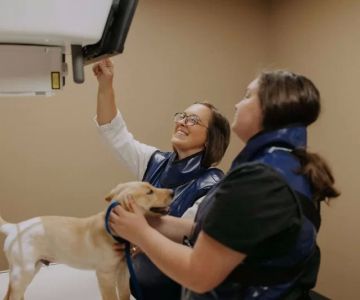How to Wrap a Surgical Pack for Veterinary Procedures
- 1. The Importance of Properly Wrapped Surgical Packs in Veterinary Surgery
- 2. Materials and Tools Needed for Wrapping a Surgical Pack
- 3. Step-by-Step Guide on How to Wrap a Surgical Pack
- 4. Common Mistakes to Avoid When Wrapping Surgical Packs
- 5. How to Enhance Your Surgical Preparation for Veterinary Procedures
1. The Importance of Properly Wrapped Surgical Packs in Veterinary Surgery
When performing any veterinary surgery, one of the most critical aspects is ensuring the sterility of the surgical environment. A properly wrapped surgical pack is essential for preventing contamination and maintaining a sterile field during procedures. Whether you're working in a veterinary clinic or a hospital, ensuring that surgical packs are wrapped correctly is an important step in the preparation process.
The process of wrapping surgical packs in veterinary medicine is not only about adhering to sterile techniques but also about organization and efficiency. A well-wrapped surgical pack guarantees that all necessary instruments are readily available and that they remain sterile until needed, helping to reduce risks of infection and promoting quicker recovery for pets undergoing surgery.
2. Materials and Tools Needed for Wrapping a Surgical Pack
Before you begin the process of wrapping a surgical pack, it's important to gather all necessary materials and tools to ensure an effective outcome. Below are some of the key items you will need:
- Surgical Sterilization Wrap: The most important material for wrapping surgical packs is sterilization wrap. This can be either a single-use disposable wrap or reusable fabric, such as cotton or non-woven materials. It must be sterile and strong enough to withstand handling during surgery.
- Autoclave Tape: Autoclave tape is used to seal the pack and provide a visual indicator that the pack has been sterilized. It changes color when exposed to the sterilization process, ensuring that the surgical instruments inside are sterile.
- Surgical Instruments: All necessary surgical instruments, such as scalpels, scissors, forceps, and needles, should be included in the pack. It's crucial to organize these instruments in a way that allows easy access during surgery.
- Indicator Strips or Tags: These are essential for monitoring the sterilization process. The strips indicate whether the surgical pack has been exposed to the correct temperature and pressure for sterilization.
Having all of these tools ready ensures that the process of wrapping the surgical pack is efficient and effective. Once you have everything on hand, you're ready to begin wrapping the surgical pack for veterinary procedures.
3. Step-by-Step Guide on How to Wrap a Surgical Pack
Wrapping a surgical pack may seem like a simple task, but there are specific techniques that need to be followed to ensure the pack is properly sterilized and ready for use. Here’s a detailed step-by-step guide on how to wrap a surgical pack in veterinary procedures:
- Step 1: Prepare the Instruments – Lay out all the instruments you will need for the surgery. Ensure that they are clean and dry before placing them into the pack. Arrange the instruments in a logical order, with the most commonly used tools placed on top for easy access during surgery.
- Step 2: Lay the Sterilization Wrap – Lay your sterilization wrap flat on a clean surface. If using a reusable fabric, ensure it has been laundered and sterilized. If you're using disposable wrap, ensure it’s intact and sterile.
- Step 3: Place the Instruments in the Center – Carefully place the instruments in the center of the sterilization wrap, leaving enough space around the edges to fold the material properly.
- Step 4: Fold the Corners – Fold the corners of the wrap towards the center, making sure that the instruments are completely enclosed. If you're using a square wrap, you should fold the top and bottom edges inward first, followed by the sides.
- Step 5: Seal the Pack – Once the pack is securely folded, seal it with autoclave tape. Ensure that the tape is placed along the edge of the pack so it holds everything tightly in place. Attach sterilization indicator strips or tags to the pack to monitor the sterilization process.
- Step 6: Place the Pack in the Autoclave – After the pack is wrapped and sealed, it is ready to be placed in the autoclave for sterilization. Make sure the pack is positioned in the autoclave to allow proper steam circulation for sterilization.
4. Common Mistakes to Avoid When Wrapping Surgical Packs
When wrapping surgical packs in veterinary practices, it's easy to make small mistakes that can affect the sterility of the pack. Here are a few common mistakes to avoid:
- Improper Folding: Incorrect folding of the surgical wrap can lead to air pockets or gaps in the sterile barrier. Always fold neatly and ensure the instruments are fully enclosed.
- Overpacking: Cramming too many instruments into a single pack can make it difficult to properly sterilize the contents. Keep the pack organized and only include essential instruments.
- Failure to Use Sterilization Indicators: Skipping the use of sterilization indicators can lead to a lack of assurance that the pack has been properly sterilized. Always use indicator strips or tags to verify the sterilization process.
5. How to Enhance Your Surgical Preparation for Veterinary Procedures
Efficient and effective surgical preparation is crucial in veterinary practice, not only to ensure the success of the procedure but also to promote the recovery of the animal. Here are some tips to further enhance your surgical preparation:
- Stay Organized: Maintain a clean and organized workspace where everything is readily accessible. This will save time during surgery and reduce stress.
- Use Quality Materials: Ensure that all wrapping materials and sterilization tools are of the highest quality. Investing in good-quality wraps and autoclave tape can improve your results and prevent issues during the sterilization process.
- Regular Training: Keep your skills sharp by attending workshops or training sessions that focus on surgical pack wrapping and sterilization techniques. Proper training ensures that you follow the best practices for sterilization.
By following these best practices, you can ensure that your veterinary surgeries are carried out safely, efficiently, and in a sterile environment, ultimately improving the outcomes for your patients.











